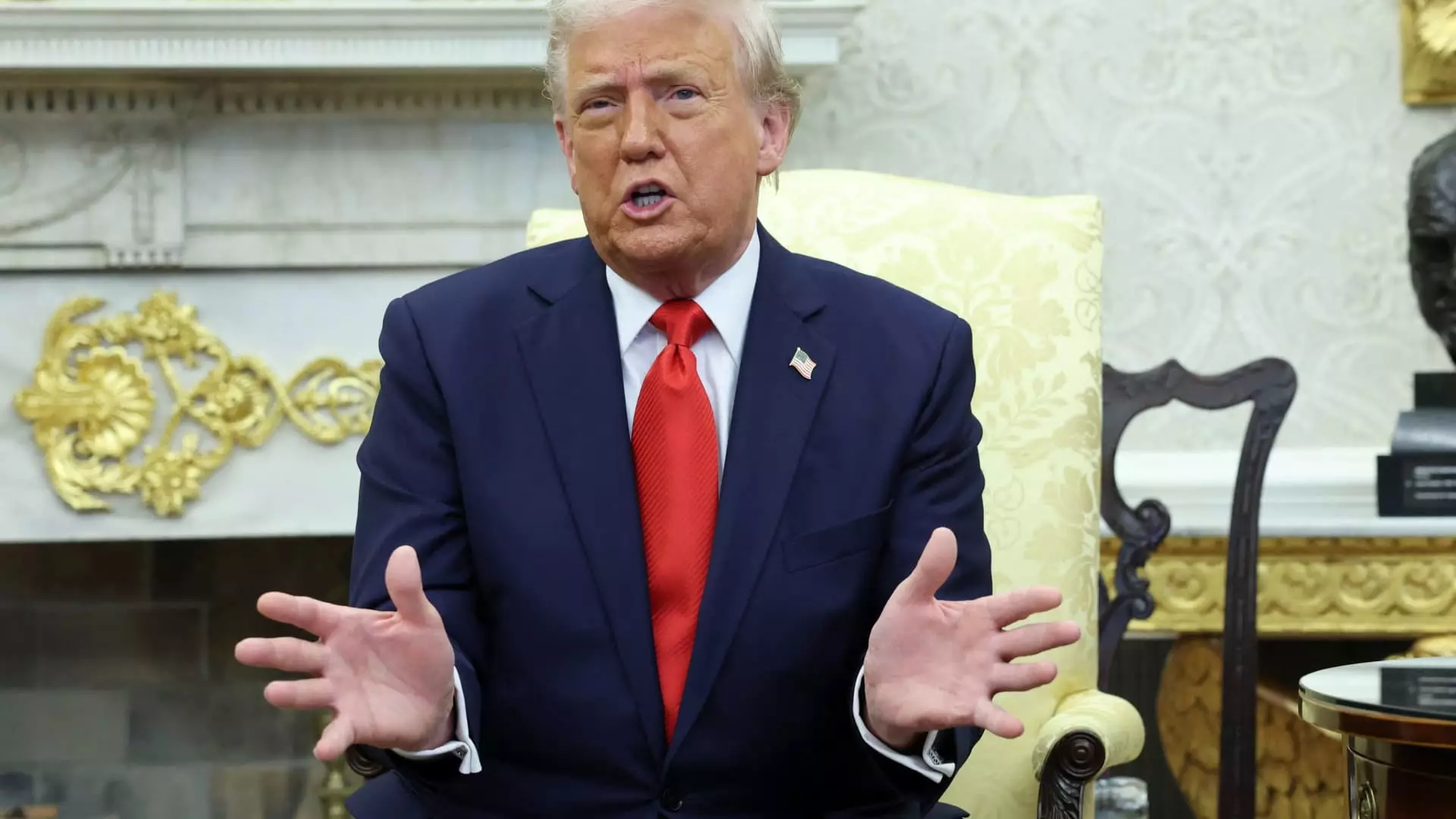In an economic landscape rocked by uncertainty and volatility, Wall Street’s recent achievement—an eye-catching $16.3 billion in stock trading during a single quarter—can feel like a beacon of chaos disguised as success. This soaring figure comes on the heels of a tumultuous political backdrop, driven largely by President Trump’s polarizing policies. For many, the question looms: can true prosperity emerge from a system that appears to thrive on instability? What does it say about the current state of our economy when the financial giants find their strongest quarter not through productive investments but rather by capitalizing on unpredictable market fluctuations?
Over the past year, we have witnessed a significant evolution in how major banks operate. Their profits now hinge on rapid trades instead of long-term investments. During the first quarter, this shift became glaringly apparent as heavyweights like Goldman Sachs and JP Morgan Chase reported record revenues. Their business models increasingly depend on a continuous cycle of speculative trading, rather than nurturing the economy with sustainable development initiatives. This reliance raises profound concerns about the long-term implications of an economic system that finds its lifeblood in short-lived market panics.
Fleeting Gains: The False Promise of Economic Prosperity
The term “Trump boom” has echoed through financial hallways, yet the expectations surrounding this speculative surge leave much to be desired. Investment banking, typically regarded as the backbone of financial growth, remains muted. As corporate leaders face mounting uncertainty, they delay making strategic decisions, leading to a paradox where stock trading flourishes while real investment stagnates. The consequence? A sector driven by a frenzy of market activity devoid of strong economic fundamentals, leaving many to wonder if this is merely a house of cards waiting to collapse.
To add insult to injury, major banks have begun setting aside billions for anticipated defaults, an explicit acknowledgment that the very economy they’re banking on is perilously fragile. While the stock trading desks may be thriving, almost foaming at the mouth for the next market movement, the broader economic landscape is clouded with rising unemployment predictions and stagnant loan growth. The dichotomy between booming stock trading revenues and the muted signals from other financial sectors makes it painfully clear: Wall Street may be winning, but Main Street is left to bear the repercussions.
Trading, Turbulence, and the Loss of Trust
The record revenues in stock trading are speculated to be inflating both optimism and anxiety for Wall Street’s leading firms. The surge was precipitated by the political noise emanating from the White House, particularly early trade policy decisions that sent shockwaves throughout the markets. Trump’s introduction of tariffs and the resulting market reaction can hardly be considered a sign of a healthy economy; rather, it paints a portrait of a trading atmosphere that thrives on uncertainty. In effect, such an approach often breeds an unhealthy dependency on volatility, suggesting that without the tempestuous nature of political drama, the gains would wither away.
What happens when traders become addicted to the intoxicating chaos? This question underscores a crucial tension in the current financial climate: as financial giants revel in their short-lived profits, the underlying ethical implications are overshadowed. If capitalism has a morally responsible face, it must prioritize sustainable growth over speculative gain. The risk with this current momentum is evidently the erosion of public trust—a silent peril that could ultimately undermine the very foundation of the financial system.
A Financial Framework Unraveling
This financial frenzy unravels the narrative of stability that banks have historically maintained following the 2008 financial crisis. A decade later, one would hope that lessons were learned about excessive risk and the need for accountability. Instead, Wall Street’s resilient trading desks have found their footing in a risky realm, increasingly characterized by high-speed automated trading, creative financial instruments, and vast leverage. Gone are the days when investment in the economy was synonymous with tangible growth; now it seems profits in the financial sector hinge on betting on unpredictability—a notion as disturbing as it is shortsighted.
As banks dig deeper into speculative trading and further detach from tangible economic contributions, the implications for Main Street become more dire. The focus on short-term trading profits may appear appealing now, yet we must ask ourselves, what costs are we willing to pay? Are we merely a few market fluctuations away from a repeat of historic financial calamities? In the rearview mirror, Wall Street’s latest success may reveal itself to be the ultimate paradox: a gilded vessel sailing on turbulent seas, promising riches while drifting dangerously off course.

